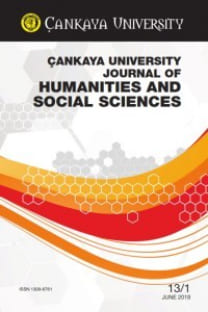Locating Sancho through Westminster: A Topographical Reading of The Letters of the Late Ignatius Sancho, an African
A topographical reading of Ignatius Sancho’s letters, especially as it relates to his detailed account of the Gordon riots of 1780, remains a gap in Sancho’s studies. Most of the earlier studies have only mentioned his account of the riots briefly. His account of the riots spans across four letters addressed to banker John Spink, which have all been, along with several other letters he wrote, posthumously published in the collection, Letters of the Late Ignatius Sancho, an African. As part of my discussion, I will show how a mapping of the spaces described in Sancho’s Letters reveals the unlikelihood of his account being solely eyewitness. Here, however, I aim to follow Sancho’s movement through the disrupted spaces where the riots took place and examine his reactions to these spaces. My conclusion here is that Sancho associates with the largely unscathed spaces of Westminster, where he lived, an indication of the social wellness of the area, and himself.
Anahtar Kelimeler:
Space, 18th Century London, Identity, Topography, Blacks
Locating Sancho through Westminster: A Topographical Reading of The Letters of the Late Ignatius Sancho, an African
A topographical reading of Ignatius Sancho’s letters, especially as it relates to his detailed account of the Gordon riots of 1780, remains a gap in Sancho’s studies. Most of the earlier studies have only mentioned his account of the riots briefly. His account of the riots spans across four letters addressed to banker John Spink, which have all been, along with several other letters he wrote, posthumously published in the collection, Letters of the Late Ignatius Sancho, an African. As part of my discussion, I will show how a mapping of the spaces described in Sancho’s Letters reveals the unlikelihood of his account being solely eyewitness. Here, however, I aim to follow Sancho’s movement through the disrupted spaces where the riots took place and examine his reactions to these spaces. My conclusion here is that Sancho associates with the largely unscathed spaces of Westminster, where he lived, an indication of the social wellness of the area, and himself.
Keywords:
Space, 18th Century London, Identity, Topography, Blacks,
___
- Babington, Anthony. Military Intervention in Britain: from the Gordon Riots to the Gibraltar Incident. Routledge, 1990.
- Carey, Brycchan. “‘The Extraordinary Negro’: Ignatius Sancho, Joseph Jekyll, and the Problem of Biography.” British Journal for Eighteenth-Century Studies, vol. 26, no. 2, 2003, pp. 1-13.
- Carretta, Vincent. “Three West Indian Writers of the 1780s Revisited and Revised.” Research in African Literature, vol. 29, no. 4, 1998, pp. 73-87.
- Ellis, Markman. “Ignatius Sancho’s Letters: Sentimental Libertinism and the Politics of Form.” Genius in Bondage: Literature of the Early Black Atlantic, edited by Vincent Carretta and Philip Gould, UP of Kentucky, 2001. pp. 199-217.
- Foucault, Michel. “Of Other Spaces.” Diacritics, vol. 16, no. 1, 1986, pp. 22-27.
- Jekyll, Joseph. “The Life of Ignatius Sancho.” Letters of the Late Ignatius Sancho, an African. First published in London: Nichols, 1782.
- Lefebvre, Henri, and Donald Nicholson-Smith. The Production of Space. Basil Blackwell, 1991.
- “Map of The Gordon Riots.” Bl.uk. N.p., 2017. Web. 3 May 2017. http://www.bl.uk/learning/timeline/item104674.html
- Nicholas Rogers, “The Gordon Riots.” Crowds, Culture, and Politics in Georgian Britain. Clarendon Press, 1998. pp. 152–175.
- Olaleye, Banjo. “Recasting Africanness: Ignatius Sancho and the Question Of Identity.” Çankaya University Journal of Humanities and Social Sciences vol. 13, no. 1, 2019, pp. 50-61
- ---. “Sancho and the Gordon Riots of 1780.” Grubstreetproject.net. N.p., 2017. http://grubstreetproject.net/london/#map=25/pois=3807/@21508,36811,19384z
- Sancho, Ignatius. The Letters of the Late Ignatius Sancho, an African. Ed. Vincent Carretta. Broadview Editions, 2015.
- ISSN: 1309-6761
- Yayın Aralığı: Yılda 2 Sayı
- Başlangıç: 2004
- Yayıncı: Çankaya Üniversitesi
Sayıdaki Diğer Makaleler
Decolonization of policy process and not the policy of decolonization
Henry James’s Prefatory Discourse as a Site for Innovation, Construction, and Instruction
Henry James’in Önsöz Yazma Geleneği Üzerine
Epistolography of the Repressed: Writer/Iwaszkiewicz, Reader/Karpowicz
Encarnación ALMAZÁN-RUİZ, Aroa ORREQUİA-BAREA
Hanif Kureishi’s The Last Word: The Art of Fictional Biography
